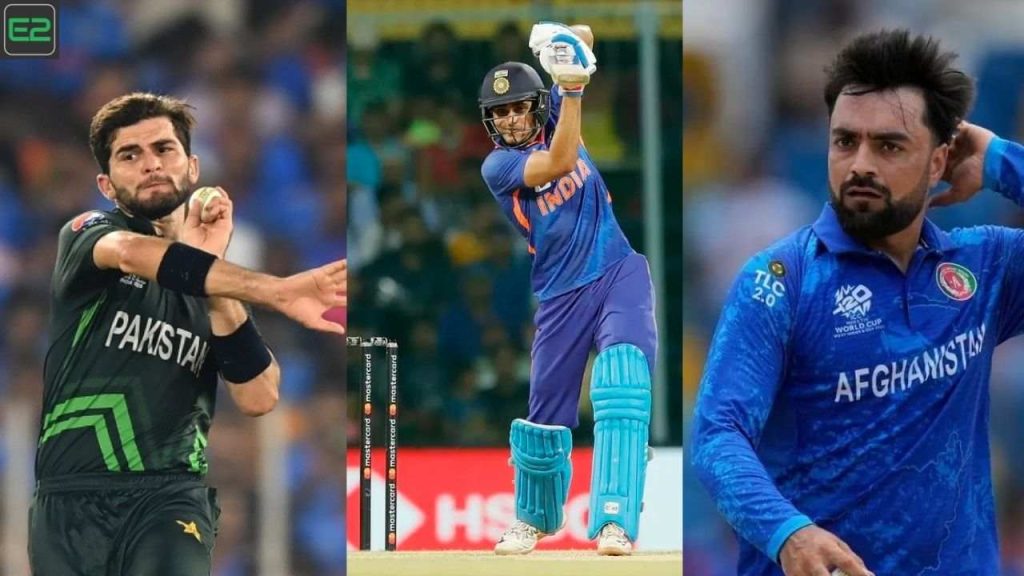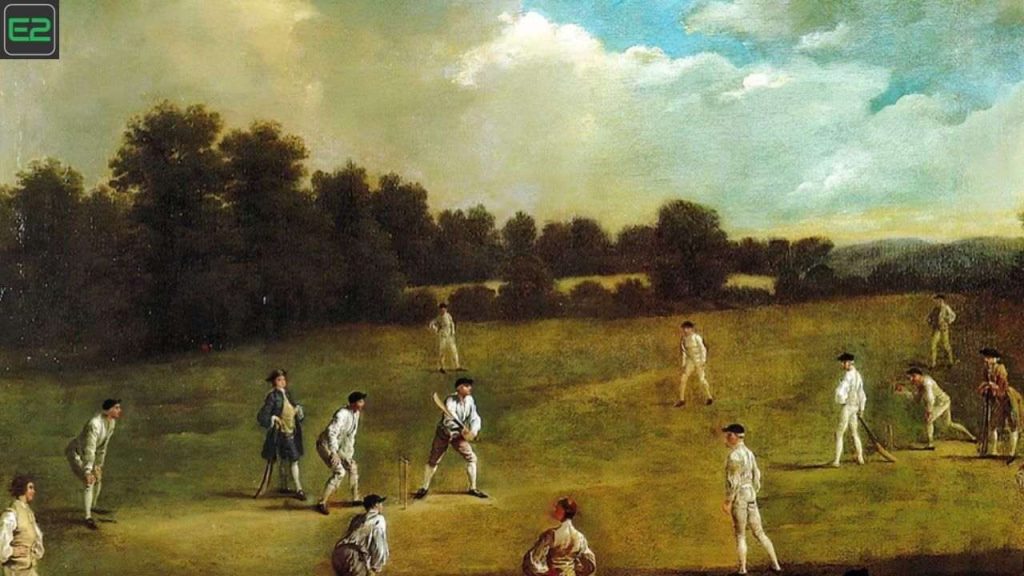Cricket Players In A Team: Ever wondered why every cricket team has exactly 11 players?
This unique team structure is deeply rooted in cricket’s origins and development dating back to the 16th century.
A standardised 11 players per team was established for this rapidly growing bat-and-ball sport.
This move proved pivotal for defining roles within the game.
Having 11 players enabled specialised positions for batsmen, bowlers, wicket-keepers, and fielders to emerge. The numbered structure allowed tactics to develop based on the capabilities of these 11 roles.
Near 300 years later, the 11-a-side format continues to drive cricket’s entertainment value for players and fans globally.
Interestingly, of all the changes to the ‘Laws of Cricket’over the years, the only thing never to have changed is the length of the pitch, which remains today at 22 yards (20m), stump to stump.
While modified versions exist for backyard cricket, official cricket steadfastly holds on to its heritage of 11 players per team.
This strategic team balance has withstood the test of time.
Table of Contents
The Reasoning Behind 11 Cricket Players

Cricket began as an informal pastime in England in the 16th century.
Village matches saw teams of fluid sizes compete on local grounds. But by the early 1700s, the game was gaining mass appeal across the country. Standard rules were needed to govern matches between counties and towns.
In 1744, a set of laws were established that would shape cricket permanently:
- Teams would consist of 11 players per side
- The wicket would have 3 stumps
- Over four balls would make up an over
The Birthplace of Cricket’s Laws: The Bat & Ball Inn, Hambledon
The development of cricket’s standardized team structure and laws can be traced back to The Bat & Ball Inn, Hambledon. It was at this historic location that the laws of cricket, the first having been ‘drafted’ in 1744 in London, were developed, setting the stage for the sport’s evolution.
The ‘laws of cricket’ as we know them were published for the first time 1755.
After a batter came in with a cricket bat as wide as the ‘two stumps’ and stood holding his bat infront of the stumps thus preventing the ball from hitting them, play was halted and over to The Bat & Ball Inn the teams went.
Over the course a few pints, and no doubt heated debate, the foundation on which today laws of cricket stand, was crafted; laws that inluded the bat’s width being no more than 4.25″ (10.8cm).
(Fast forward to 2009 when Australian Cricket Tours founder Luke ‘Sparrow’ Gillian worked as chef at The Bat & Ball Inn, further solidifying his deep-rooted connection with the game of cricket)
Broadhalfpenny Down Cricket Ground: Where History Was Made

Broadhalfpenny Down Cricket Ground, near the village of Hambledon, played a significant role in cricket’s early development. This iconic ground, known as the ‘Cradle of Cricket’, witnessed matches that helped shape the game’s laws and structure, including the establishment of the 11-player format. Its historical importance is etched in cricket’s rich tapestry.
As there was not as yet a famed tilted patch of grass in north London on which to play and call ‘home’, Broadhalfpenny Down was the stage for 51 encounters between Hambledon Cricket Club, the most powerful club in the land, and All England, over which Hambledon won 29 times.
These matches, characterized by top-level skills and fierce competition, attracted thousands of spectators contributing to cricket’s growing popularity and solidifying the significance of the 11-player format.
The Bat & Ball Inn’s contribution to laws of cricket, the importance of Broadhalfpenny Down Cricket Ground, and the captivating clashes between Hambledon CC and All England teams paints a vivid picture of cricket’s historical journey.
There were a few key factors:
Specialised Positions
- Having 11 players allowed for specialist batsmen and specialist bowlers to emerge instead of more generalist players.
- With 11 designated spots, a team could assign 3-4 primarily as expert batsmen to score runs, 3-4 primarily as expert bowlers to get batters out.
- The wicketkeeper role also emerged, along with the all-important captain of the team.
- The remaining handful of players became all-rounders – bowling in addition to batting.
- This specialisation improved quality and strategy. Teams could play to their strengths.
Field Dimensions

- The large oval-ish field size of cricket was ideal for having 9 fielders surrounding 2 batters in the centre, with one bowler and one wicketkeeper
- The cricket field remains one of the few sports with no fixed dimension. Dimensions change venue by venue, and game format by format. No two cricket fields are ‘deliberately’ the same dimension
- 11 enabled teams to cover the in-field positions like slips, cover, mid-on/off and the outfield positions like third man, fine leg effectively when fielding. No major gaps were left unattended
- The captain could set specific fielding positions based on the bowler’s technique and batter’s tendencies. These are some orthodox (regular) fielding positions:
| Fielding Position | Location | Role |
| Slips | Behind batsman | Catch edges of bat |
| Gully | Very close-in | Stop runs on ground |
| Covers | On either side | Cut off drives/boundaries |
| Mid on/off | On either side | Save quick singles/runs |
| Third man | Far edge of circle | Catch glances/edges |
| Fine leg | Far side | Stop pulls/sweeps |
| Wicket keeper | Behind wicket | Catch balls, stump batters |
Decisive Results
- Having an odd number of players avoided draws and ties
- With 11, one team had to win outright eventually
- 11 per side meant a decisive victory was assured when one team was bowled out completely.
- The odd number created a competitive target
- This desire for definitive results increased excitement and engagement for fans following matches.
Over 300 years later, competitive cricket remains tied to its heritage of 11 players per side.
The foundations remain, even as new tactics and athleticism transform how modern cricket is played.
The 11-a-side format still provides the right balance of specialisations and flexibility to showcase cricket at its absolute best.
Exceptions to the 11 Player Rule
While official, competitive cricket maintains the standard 11 players per side, some exceptions and variations do exist:
In more casual, park or club cricket, it is common to see teams with lesser numbers (especially when playing for or against Nepotists Cricket Club), though the general rules stay intact. Teams are often formed with anywhere from 8 to 11 players depending on who is available.
Indoor cricket is played between two teams of 6 players each rather than 11. With fielding restrictions, bowling variations and other modified rules, indoor cricket with just 6 athletes leads to a faster paced and radically different version of the sport.
So while 11 players is standard in top-level competitive cricket, there is flexibility at the amateur and informal level to adapt to fewer players per side and still enjoy the great game of cricket.
The Staying Power of 11
For over 275 years, the standard of 11 players per cricket team has remained integral to the sport’s identity and development.
The numbered system allowed for bowling and batting specialisations to emerge and enabled tactical field arrangements.
This strategic balance of 11 per side still governs the ebb and flow of competitive cricket around the world.
Though informal variations exist, official cricket remains loyal to its heritage and continues displaying why 11 players is the perfect formula for this beloved bat-and-ball game.
In cricket, 11 is more than just a number – it’s the foundation.
You will have fun playing exciting games on here: E2Bet
Here Are Some Helpful Tips:












